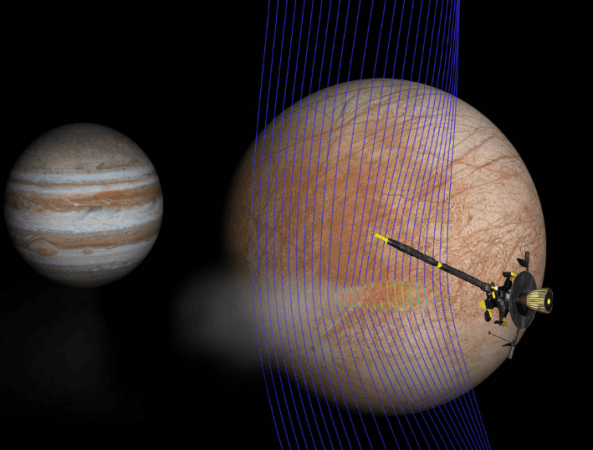
Europa, the smallest of the four Galilean moons orbiting Jupiter, which is considered as one of the most promising places to search for alien life in the solar system, is once again in the news as scientists observed something that looked like a sprouting water plume from old Hubble Space Telescope photographs.
This is not the first time that the possibility of alien life in Europa was discussed. Last year, scientists said that life in Europa is very much possible as the moon is expected to have tectonic plates, just like Earth. the existence of tectonic plates also implies the possibility of life in the ocean beneath the icy surface.
"We have this evidence of extension and spreading, so the question becomes where does that material go? On Earth, the answer is subduction zones. What we show is that under reasonable assumptions for conditions on Europa, subduction could be happening there as well, which is really exciting," said Brandon Johnson, an assistant professor in Brown's Department of Earth, Environmental and Planetary Sciences.
He also added: "If indeed there's life in that ocean, subduction offers a way to supply the nutrients it would need," Johnson
Apart from a possibly habitable ocean on Europa, this feature can also help us understand how plate tectonic movement started on the Earth.
Coming back to the water geysers, according to National Geography, images from the telescope showed water vapour erupting from the moon's surface from time and again. In 2013, one picture showed a possible 125-mile-high plume of water vapour sprouting from a region in the moon's southern hemisphere.
"There were some anomalous features in that close pass in December 1997 that we never fully understood...We went back and looked at them more carefully and found that they were just what you'd expect if we'd flown through a plume," said Margaret Kivelson, a senior scientist on the Galileo mission and emeritus professor of space physics at the University of California in Los Angeles, according to The Guardian.
In May 2017, the SETI Institute's Melissa McGrath also discussed all the potential evidence of plumes, including on spotted by the Galileo spacecraft two decades earlier.
"We saw very peculiar changes in the magnetic signal, something I don't think has been explained in the past. We also pulled out the plasma wave data from Galileo, and surprisingly, around the same time, the plasma wave showed anomalous emissions. So when you put those two together, that indicated that something very special had happened during that interval," said space scientist Xianzhe Jia from University of Michigan, who studied the archival data.
If such plumes are common on the surface of Europa, which is known to possess a subsurface ocean, work of scientists looking for alien life is incomplete. They simply have to send a probe through one of those water blasts, rather than sending a spacecraft to the celestial body, making it land there, make it land on the surface an then dig till it reached the extra-terrestrial ocean. And guess what, there are few missions by Nasa and European Space Agency are already in the pipeline.














